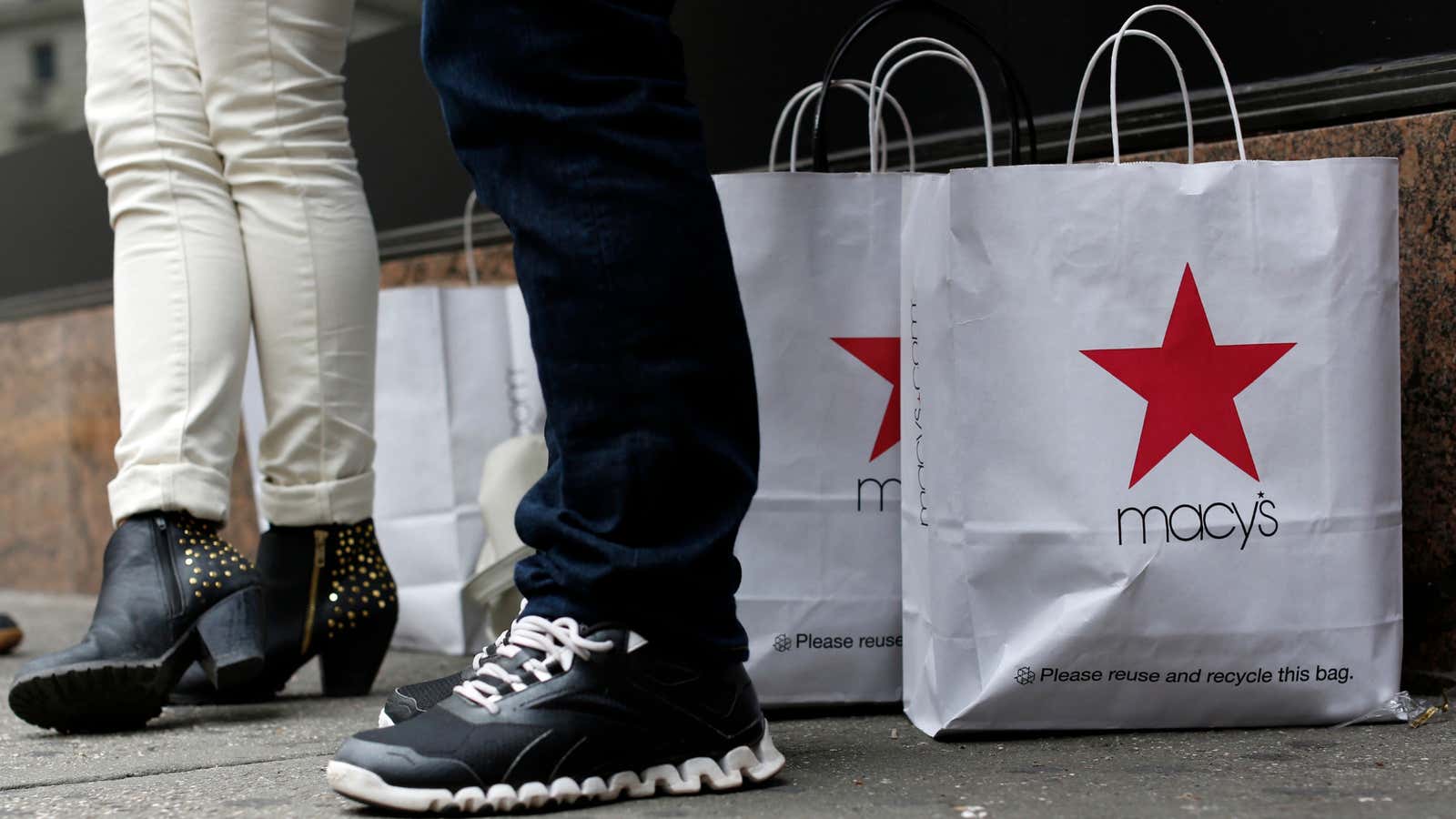For the past three years Macy’s has posted $1 billion in revenue growth while its competitors continue to slip drastically.
How has Macy’s been able to rise above? Through E-commerce. Online sales have increased 40% each year since 2010 and now account for nearly $3.1 billion annually (approximately 11% of total revenue). Last year, CEO Terry Lundgren led the company to earnings of $28 billion, its highest to date.
Over the past six years, Lundgren navigated perilous waters as the company was near bankruptcy. In 2008, sales plummeted while the company’s stock price dipped to historic lows and critics warned that the company was on the brink of default.
“We’ve been under attack from a number of types of consumer options for a long, long time. Today, Macy’s is a very lively, growing business,” Lundgren told Quartz.
“Rumors of our death are greatly exaggerated,” he said, referring to the struggling department store industry.
Michael Binetti, a retail analyst for UBS says, “Lundgren understood there’s not a lot of store growth opportunity. He’s done a very good job of focusing the investments for the future of this company on what has panned out to be the correct path to growth for the industry.”
The company invested in its online services to meet the needs of the new “omni-channel” consumer: A woman (80% of Macy’s customers are women) can find a Macy’s location on her phone, try on a product in the store, and then go back to her office to buy it on her tablet or PC.
Critics contend that consumers can simply use Macy’s as a showroom and go to Amazon or eBay to buy products for less. But most of Macy’s core brands aren’t found on Amazon or anywhere else: 20% of its Ralph Lauren products are exclusive to Macy’s, as well as 100% of its Tommy Hilfiger and Kenneth Cole Reaction items. Overall, 46% of the products sold last year at Macy’s were exclusive to the company. Because of the size of its inventory orders, Macy’s can work with vendors on these exclusive offerings.
But since these items don’t sell equally across the country, Macy’s has used its online platform to bridge the inventory disconnect by using its stores as distribution centers, a key component of Lundgren’s localization strategy. Lundgren’s “My Macy’s” strategy appoints local buyers to oversee individual markets of 10-25 stores, stocking items specific to the region’s customers. Each store must also carry a certain amount of Macy’s-specific prestige brands, like Ralph Lauren and Tommy Hilfiger, regardless of whether they sell in that market. This is where Macy’s leverages its online sales to move through nationwide inventories.
When a customer orders a Ralph Lauren tie online, the item ships not from the closest Macy’s store but from the location where that item is least likely to sell at full price. The localized buyers use extensive data on what sells regionally to power an online ordering algorithm. While the company sacrifices shipping efficiencies, Lundgren believes the inventory movement more than makes up for this cost.
Yet this strategy leaves Macy’s lagging behind its lead competitor Nordstrom’s, which pioneered the in-store pick up for online shoppers by optimizing its website to display real-time inventory. Customers don’t have to wait 2-5 days for shipping; they can pick up orders that same day. After its implementation in 2008, Nordstrom’s saw its in-store sales increase by 8% and revenue grow 42% over four years.
This year, Macy’s is banking on strong holiday sales with 83,000 new seasonal hires, many of whom will probably be stationed behind a computer instead of a sales rack.
